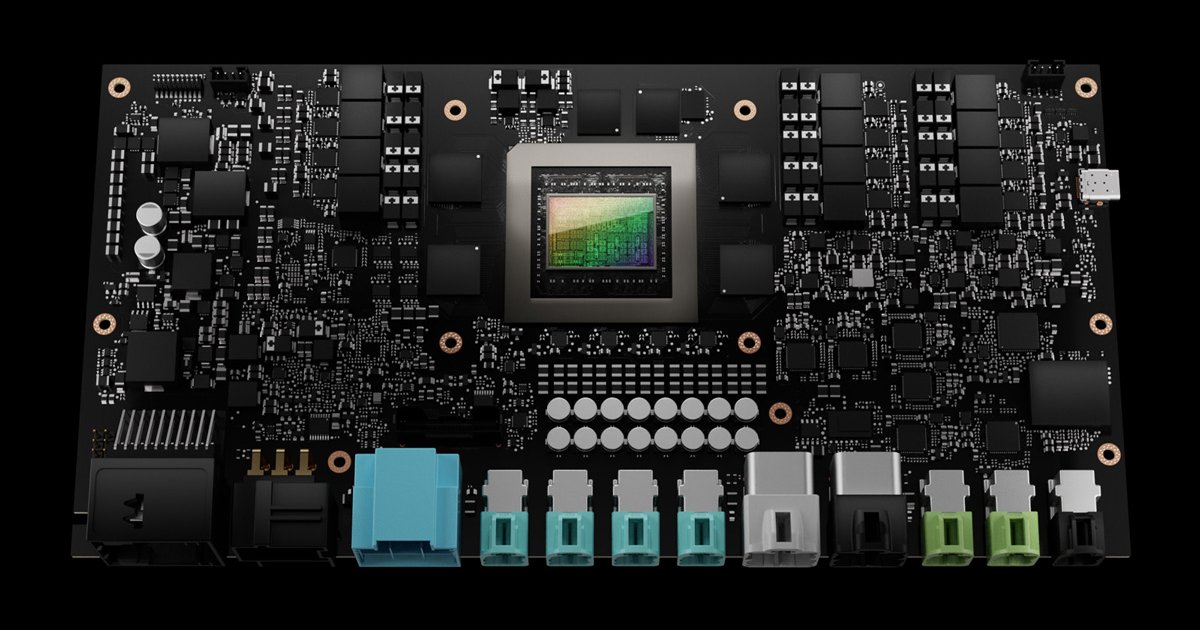
Chipmaker Nvidia showcased a high-performance automotive computer designed to advance processing of in-vehicle entertainment and automated driving functions.
The technology was unveiled Tuesday at the company’s GTC event in San Jose, Calif. Analysts say the computer is designed to keep Nvidia ahead of rival Intel and its Mobileye automotive chip subsidiary.
Nvidia’s latest tech, called Drive Thor, can control automated driving, driver-assist systems, infotainment, digital instrument clusters, occupant-monitoring and more from a single computer. This permits multiple vehicle functions on a single system-on-chip instead of spreading them across several electronic control units, lowering costs and streamlining development.
Drive Thor follows other Nvidia tech advances that debuted this year, including a graphics processing unit called Hopper and a central processing unit called Grace.
“What they’ve done with Thor is taken Grace and Hopper and put those onto a single SOC along next-generation technology they haven’t detailed yet,” said Sam Abuelsamid, an analyst at Guidehouse Insights.
Drive Thor has a processing speed of 254 trillion operations per second, compared with 176 for Mobileye‘s most recent IQ Ultra automotive computer, Abuelsamid said. Qualcomm hasn’t yet announced the processing speed of its latest Snapdragon Digital Chassis.
“I expect Qualcomm will be announcing something fairly soon, and Snapdragon Digital Chassis is getting its first production application this year,” Abuelsamid said.
As automakers shift toward more centralized vehicle architectures, they’ll rely on all-in-one systems such as those from Nvidia, Mobileye and Qualcomm.
“Automakers can also run multiple operating systems simultaneously on a single chip,” Abuelsamid said, allowing carmakers to choose different operating systems for functions such as infotainment and driver-assist.
Thor is compatible with automotive operating systems such as QNX, Linux and Android and can run multiple operating systems and apps simultaneously.
“Automakers can take advantage of our scalable architecture to transition their current development efforts to Drive Thor once it’s ready,” said Danny Shapiro, Nvidia’s vice president of automotive.
Production of the Thor computer has started, Nvidia said. Chinese automakers Zeekr and Xpeng have committed to incorporating Thor into 2025 model year vehicles.
Thor supports video game-quality graphics for infotainment and driver-assist features and allows for over-the-air updates, Shapiro said.
“Thor is a testament to the excitement we’re seeing among mobility providers for our cost-effective, simplified central-compute architecture,” he said.
But there are still some significant unknowns, Abuelsamid said.
“They haven’t yet talked about power consumption,” he said. “And we don’t yet know what it will cost.”
Mobileye’s IQ Ultra platform will consume less than 100 watts of power, Abuelsamid said. The total system cost will be less than $1,000, he said.
“We don’t know how Thor is going to compare with that, and that could still be a challenge,” Abuelsamid said.